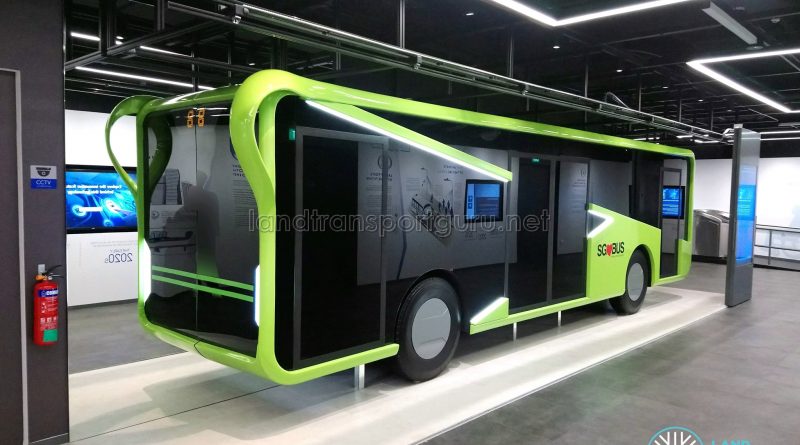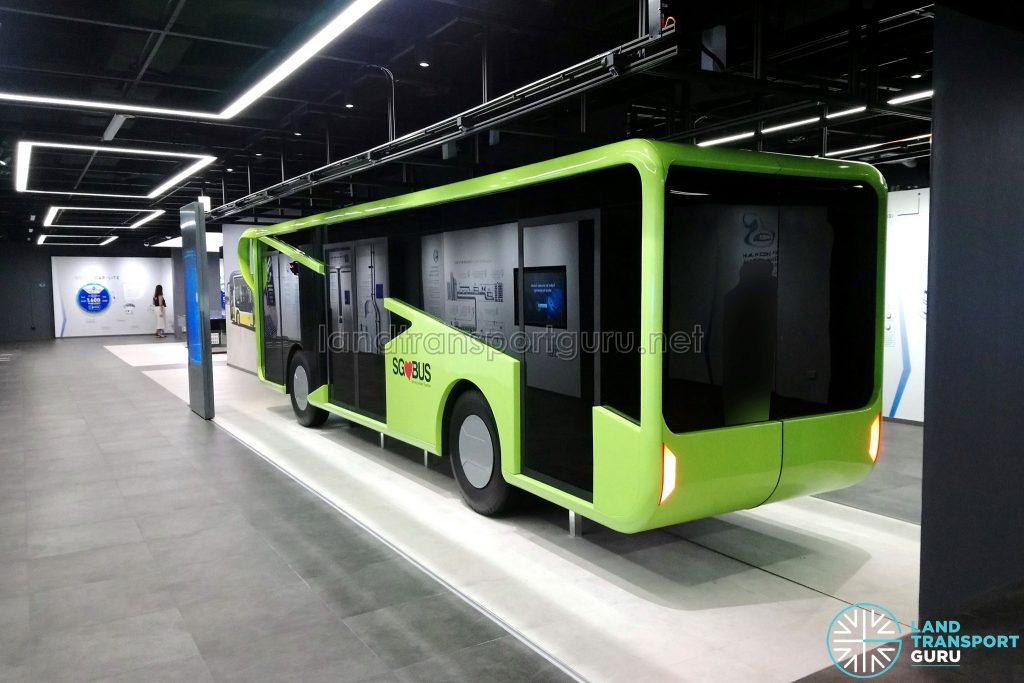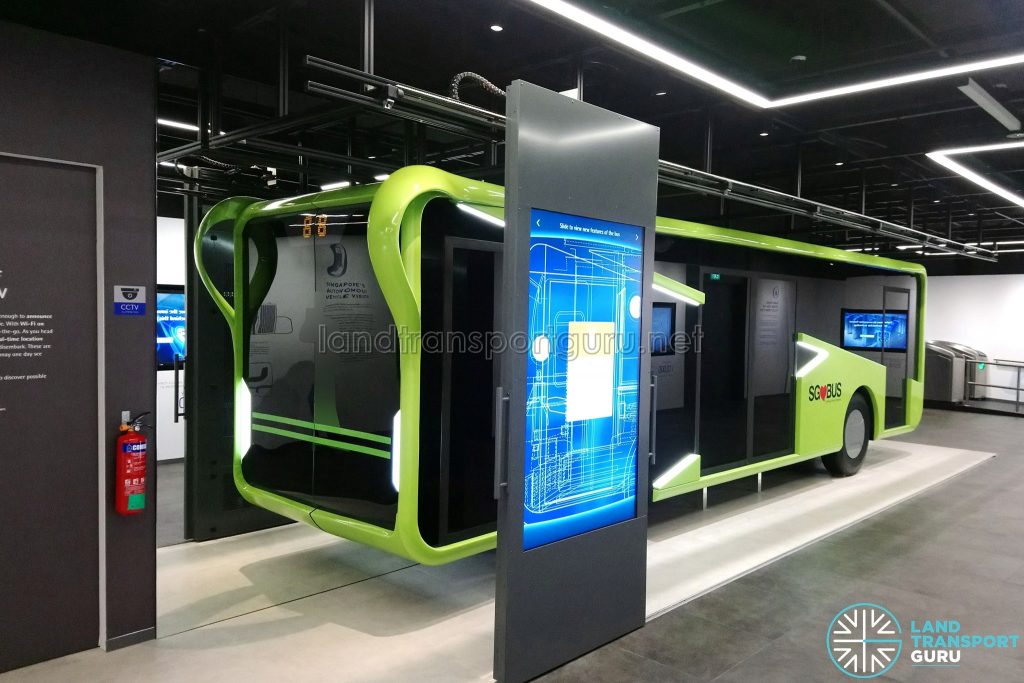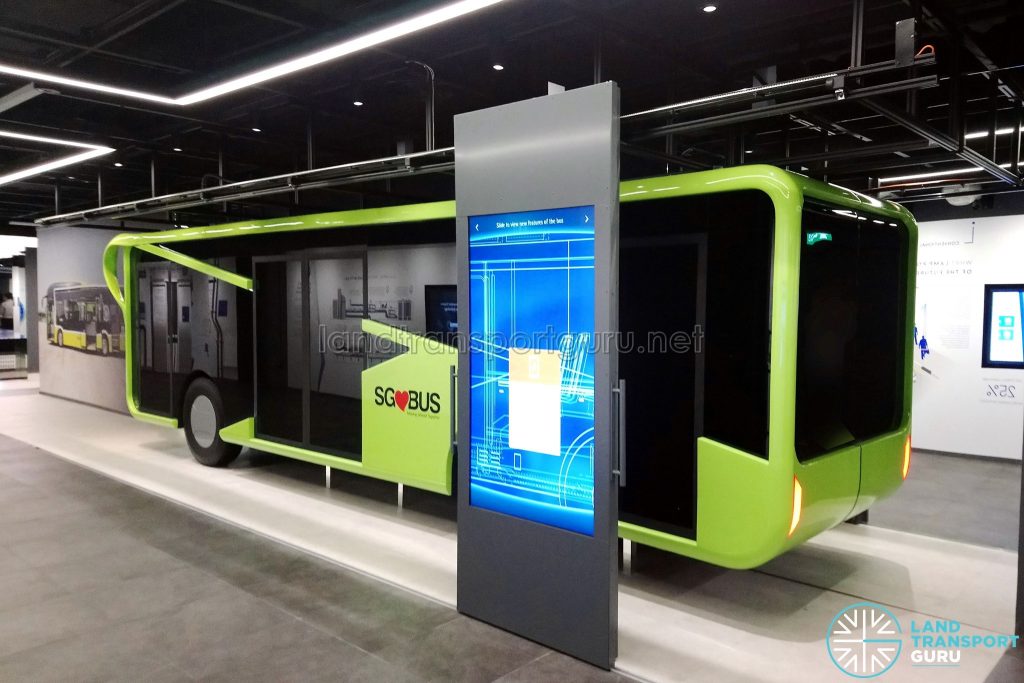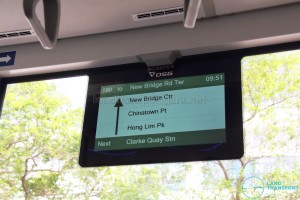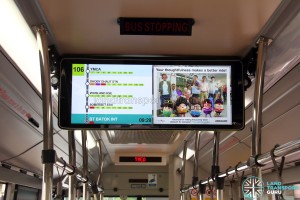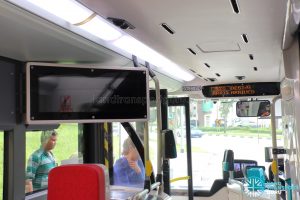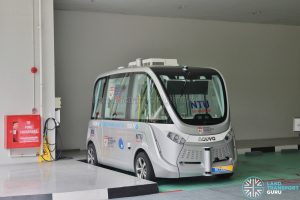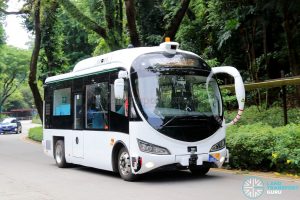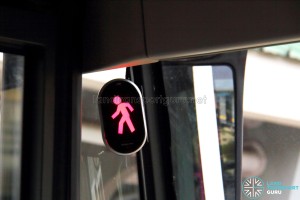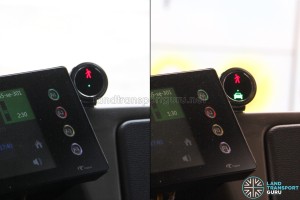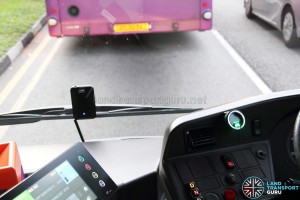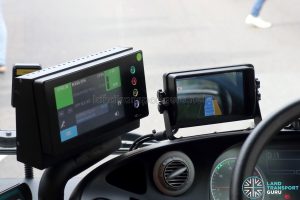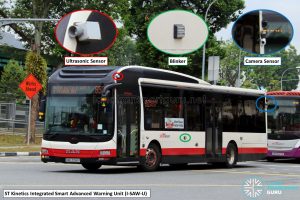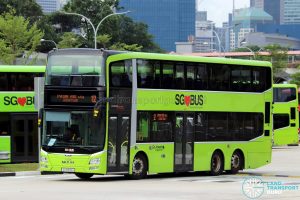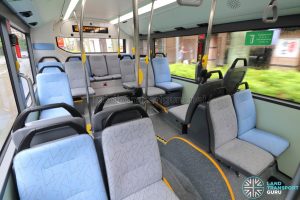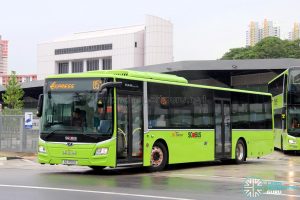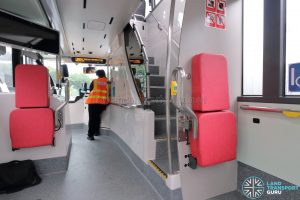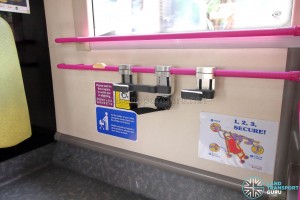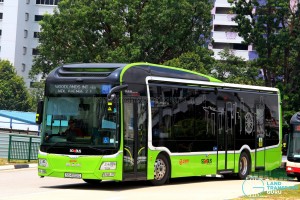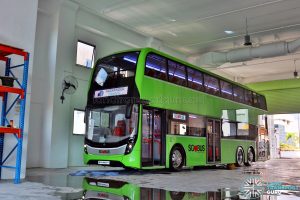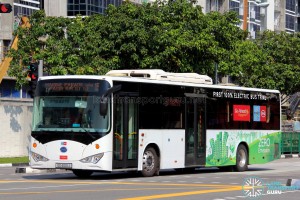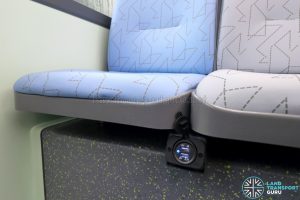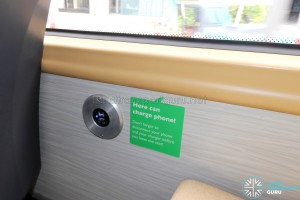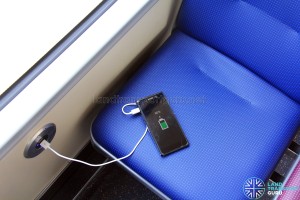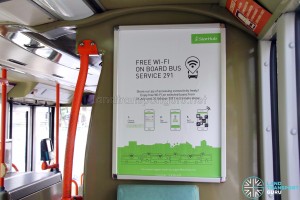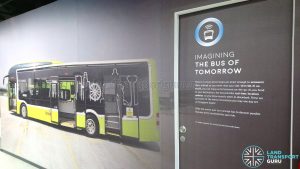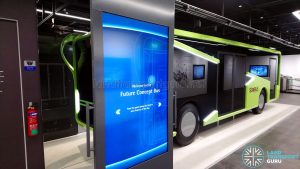The Land Transport Authority (LTA) has identified several concepts and features for buses of the future.
These concepts are showcased as part of the “Imagining the Bus of Tomorrow” exhibit at the Singapore Mobility Gallery, which was launched on 19 September 2018. Located within the LTA Headquarters at 1 Hampshire Road, Singapore 219428, its opening hours are Mondays to Fridays (except Public Holidays), from 9:30 am to 5:00 pm, and offers free admission.
The 1,000 sqm gallery was opened in 2008 and was last updated in 2013.
One of many interactive elements is the bus exhibit, featuring a miniaturized model of a 3-door bus mounted on a wall mirror, and a horizontal slider that moves across the length of the bus. While the slider is being moved, a large display screen on the slider scrolls through eleven concepts proposed for buses of the future.
Some of these features are already implemented as requirements for new buses procured by LTA under the Bus Contracting Model (BCM). These concepts are listed below:
1. Passenger Information Display System (PIDS)
An onboard bus information display will provide route information in real time for passengers. The display will also show useful travel information like the bus service number, current and upcoming bus stops as well as the terminal destination. This will be accompanied by audio announcements for the visually impaired.
LTA has conducted several small-scale PIDS trials prior to 2018, and all new buses procured, starting from the MAN NL323F (Euro 6) & MAN A95 (Euro 6), are required to come with PIDS installed.
(Featured article: Passenger Information Display System for Buses)
2. Autonomous Navigation
Driverless buses will be equipped with autonomous driving technologies, such as the Global Positioning System (GPS) and sensors to scan and determine its location and immediate surroundings. The navigation system can also perform automated steering, gear changing and speed throttling techniques, to bring commuters safely to their destinations.
Several Autonomous bus trials are currently underway, including an upcoming 3-Door Autonomous Electric Bus Trial.
(Featured Article: Autonomous Buses in Singapore)
3. Collision Detection System
The system uses smart cameras to ‘see’ moving vehicles, pedestrians and cyclists in blind spots to take preventive measures. This links up to the drive’s dashboard screen, sending audio and visual signal alerts when a moving object is too close. In some situations, it can automatically apply the brake and take corrective steering actions. This system also works with the newly implemented warning light system.
Collision Detection Systems are part of Advanced Driver Assistance Systems and are currently mandatory for new buses procured by LTA.
(Featured Article: Advanced Driver Assistance Systems, Mobileye Collision Alert System)
4. External Warning Lights
Flashing warning lights will be mounted on the bus exterior, to provide an additional visual cue to commuters to keep a safe distance when the vehicle is in motion. This system also works together with the collision detection system.
Currently, trials are underway with ST Engineering (Land Systems), with its I-SAW-U Driver Warning System installed on 20 buses (5 buses each for SBS Transit, SMRT, Tower Transit and Go-Ahead).
(Featured Article: ST Engineering Land Systems I-SAW-U Driver Warning System)
5. Assistive Passenger System (APS)
The Assistive Passenger System is designed to enhance the ride experience for commuters with special needs. Internal and external bus speakers will announce the service number, destination, as well as the next stop for visually-impaired commuters on board or those waiting at bus stops. Audio announcements will also be transmitted to hearing-impaired commuters through their hearing aids. To board or alight, commuter with special needs may use a mobile application to notify their bus captain directly.
Currently, new buses procured by LTA, starting from the MAN NL323F (Euro 6) & MAN A95 (Euro 6) are required to be fitted with both internal and external bus speakers. A trial for the special needs mobile application an hearing aid audio announcement transmission has been brought up during the Committee of Supply Debate 2018 for Transport.
6. Designated Wheelchair Spaces and Stroller Restraint
A minimum of two designated wheelchair spaces will be provided for wheelchair-bound commuters, as well as a stroller restraint for families travelling with young children. These features are designed to take up minimal standing space, so that bus capacity is not compromised. Families with young children may safely secure their stroller on board at one of the two designated wheelchair spaces.
Two wheelchair spaces per bus are currently mandatory for new buses procured by LTA, while a stroller restraint system trial is ongoing.
(Featured Articles: Stroller Restraint System Trial on Service 69, MAN NL323F (Euro 6), MAN A95 (Euro 6))
7. Sensory Bus Button
For the benefit of hearing-impaired commuters, bus bells will light up as a visual cue to show that the bus will halt at the next stop. This is an added feature on top of the existing audio chime.
Sensory bus buttons were featured onboard the MAN Lion’s City DD L Concept Bus Mock-up during the Our Bus Journey carnivals in 2016. However, these sensory bus buttons were subsequently replaced with conventional bell pushes during revenue service trials.
8. 3-Door Design
An additional door located at the rear of the bus will facilitate smoother boarding and alighting, especially when the bus is operating full passenger capacity (sic). The extra door reduces jostling among commuters, while also incentivising them to move to the rear of the vehicle to make room for others to board.
LTA has called a tender for 100 3-Door Double Decker Buses in May 2018 and as of 20 September 2018, is in the process of evaluating the proposals submitted by tenderers.
(Featured Articles: LTA Trials 3-door MAN Lion’s City SD Concept Bus & Alexander Dennis Enviro500 Mock Up Bus)
9. Powered By Electricity
Fleet trials are electric buses are currently ongoing to evaluate its viability and cost-effectiveness in Singapore. Electric and hybrid buses have many benefits. It significantly reduces noise pollution and carbon emissions as compared to conventional diesel buses. This creates a pleasant commute and a more sustainable environment for commuters, pedestrians and other road users.
LTA has procured 50 Volvo 7900 Hybrid Buses as part of a tender for Diesel Hybrid buses called in May 2017. These buses are expected to debut on revenue bus service by the end of 2018.
Additionally, LTA called a tender for 60 Electric Buses in December 2017 and are currently evaluating the proposals submitted by tenderers.
(Featured Articles: Go-Ahead Singapore BYD Electric Bus Trial, BYD K9 & Volvo B5RLE Hybrid)
10. Wireless Charging
A side benefit of adopting electric bus technology is that passengers will be able to charge their mobile devices or laptops during their commute. Currently, new public buses have installed USB ports for charging of electronic devices. With the advent of wireless charging technology, buses in the future may even provide wireless charging stations on board.
USB Charging Ports are currently mandatory for new buses procured by LTA, and buses with USB Charging Ports have been on the roads since August 2016.
(Featured Article: Buses with USB Charging Ports Hit The Roads!)
11. Connectivity (WiFi and 5G capabilities)
Commuters will be able to enjoy free 5G capabilities during their commute, to allow them to plan or adjust their journeys, or to enjoy entertainment on-the-go via their mobile devices.
Several WiFi on buses trials are currently ongoing. Several companies have also provided WiFi on buses as part of their advertising campaign.
(Featured Articles: Free WiFi now available on 3-Door MAN Double Decker Bus, Free WiFi Access on SBS Transit Buses & Wireless@SG Now Available on Two Public Buses)
Gallery:
External Links & References:
Back to Bus Articles
